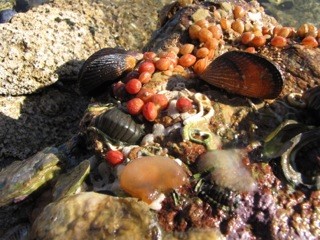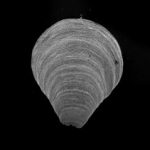Brachiopods resilient to past environmental change
A new study concludes that a seafloor dwelling marine invertebrate is more resilient to environmental change than expected. The paper, led by researchers at British Antarctic Survey, is published today in the journal Global Change Biology.
The ocean absorbs around one quarter of the carbon dioxide (CO2) emitted into the atmosphere, which has rapidly increased since the Industrial Revolution. This CO2 reacts with seawater and causes the pH to decrease, in a process known as ocean acidification. There is concern this acidification is detrimental to certain organisms as it reduces the availability of the building blocks required to produce their shells.
Brachiopods possess a large shell compared to their little animal tissue, and most of them are over 90% skeleton. Since they are highly dependent on the shell making process, it has been feared that they are extremely vulnerable to ocean acidification and environmental change. This is significant as brachiopods are present in all our world’s oceans and provide a habitat for a diverse range of animals, any changes to their abundance could have wider consequences for marine ecosystems.

Despite their anticipated vulnerability, the study which examined specimens of the common brachiopod species Calloria inconspicua collected every decade since 1900 – except the 1990’s, reveals that six key characteristics of brachiopod shells remained unchanged over the past 120 years.
Lead author Dr Emma Cross, from the University of Cambridge and British Antarctic Survey, says:
“Museum collections dating back to 1900 highlight that these common brachiopods have been resilient to their changing environment. This was very surprising.”
The team studied over 380 specimens from various museums and research institutions, collected from a single specific site in New Zealand. Shell shape, thickness and composition were evaluated to examine how these common marine invertebrates responded to changes in their environment over the past 120 years.
Dr Emma Cross continues:
“By using a unique collection of specimens this study assesses how organisms have already been affected by past environmental change. Our results provide new insights into how vulnerable organisms might react and possibly adapt to future change.”

Read the paper here.